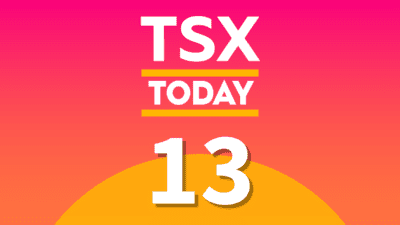A Tax-Free Savings Account (TFSA) can be an important tool that helps you save for retirement. And below, I’ll show you how you can safely get your TFSA up to $1 million by retirement if you’re able to max out your TFSA at $69,500 today.
Why aim for $1 million?
I use $1 million as the goal, because it’s not an aggressive target and yet not an unrealistic one if you have enough investing years left. And if you’re able to invest $1 million into dividend stocks that yield an average of 5%, then you could be making $50,000 in dividends in your retirement years. Assuming TFSAs are still around then, that income could even be tax-free. Then any pension or government payments you would receive on top of that would be gravy, making your life a whole lot easier during your old age.
Choosing the right investment is key
The most important step is picking which stock(s) you want to invest in to help you reach this ambitious goal.
Rather than going through a whole complicated process of determining which stocks you should hold in your TFSA and how you should diversify, the process can be simplified by just investing in an exchange-traded fund (ETF). And the BMO Nasdaq 100 Equity Hedged to CAD Index ETF (TSX:ZQQ) is a great fund to invest in. It contains the top stocks on the NASDAQ, including big names like Microsoft, Netflix, Amazon, Apple, and many others. In five years, the ETF’s value has doubled, which averages out to an annual increase of about 14% per year — and that includes the impact of the coronavirus pandemic.
Here’s how quickly the TFSA could grow
Admittedly, a 14% return may be a bit too optimistic to expect, even for the NASDAQ. Instead, let’s assume that the ETF will grow at a more modest rate of 10%. And for calculation purposes, we’ll ignore any impact of dividends — the fund currently yields a relatively minor 0.5%. If the fund were able to grow at an average of 10% per year, here’s how quickly your TFSA would get to $1 million if you invested the full $69,500 in the ETF:
| Year | Portfolio |
| 1 | $76,450.00 |
| 2 | $84,095.00 |
| 3 | $92,504.50 |
| 4 | $101,754.95 |
| 5 | $111,930.45 |
| 6 | $123,123.49 |
| 7 | $135,435.84 |
| 8 | $148,979.42 |
| 9 | $163,877.36 |
| 10 | $180,265.10 |
| 11 | $198,291.61 |
| 12 | $218,120.77 |
| 13 | $239,932.85 |
| 14 | $263,926.13 |
| 15 | $290,318.75 |
| 16 | $319,350.62 |
| 17 | $351,285.68 |
| 18 | $386,414.25 |
| 19 | $425,055.68 |
| 20 | $467,561.25 |
| 21 | $514,317.37 |
| 22 | $565,749.11 |
| 23 | $622,324.02 |
| 24 | $684,556.42 |
| 25 | $753,012.06 |
| 26 | $828,313.27 |
| 27 | $911,144.60 |
| 28 | $1,002,259.06 |
It would take 28 years for the portfolio’s value to rise from $69,500 to more than $1 million. Remember, if the NASDAQ 100 were to rise by a higher percentage on average, then a fewer number of years would be needed. While you could try and be more aggressive and invest in stocks that have the potential to increase more quickly, they can come with a lot of risk. And when it comes to saving for retirement, investing in high-risk stocks is not a good idea.
Bottom line
Growing your TFSA can take a lot of time. Investors need patience in order to be able to leave their funds alone, but that can pay off over the long term.
Being too aggressive could lead to better returns, but it could also jeopardize the safety of your portfolio. By investing in an ETF like the NASDAQ 100, investors get stability and strong returns in the process. Investing is a long game, and if you don’t have enough investing years left to achieve the goals you want, it could be a sign that you need to either save more money or that you should adjust your expectations for your retirement. Trying to make up for any shortfall by being aggressive could only make things worse.







